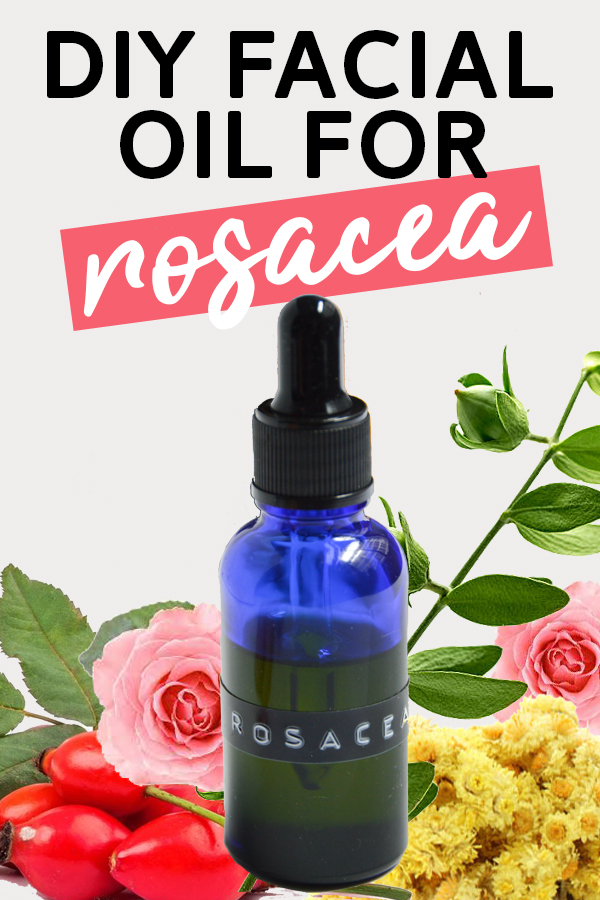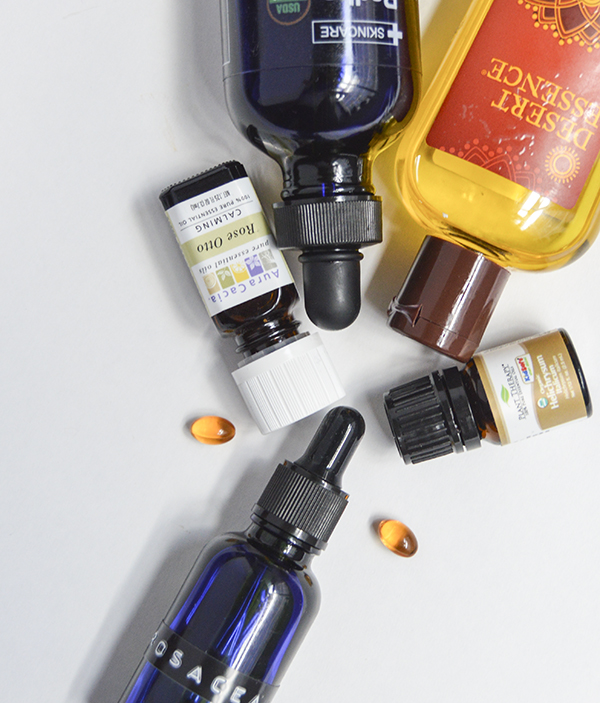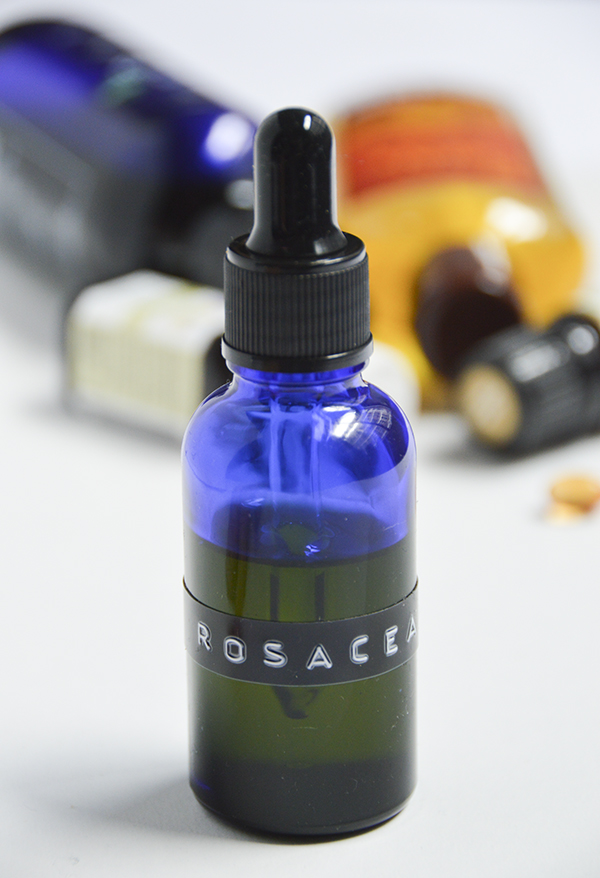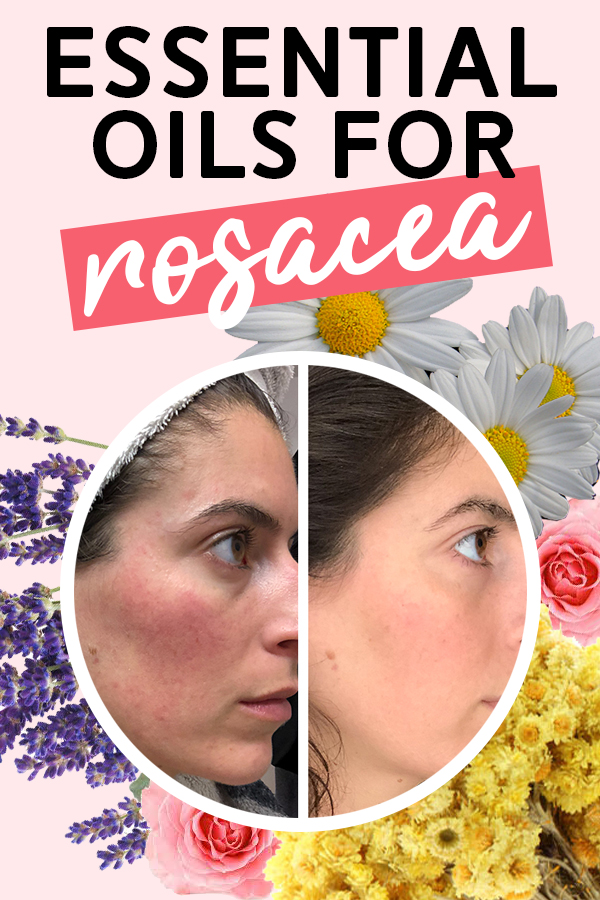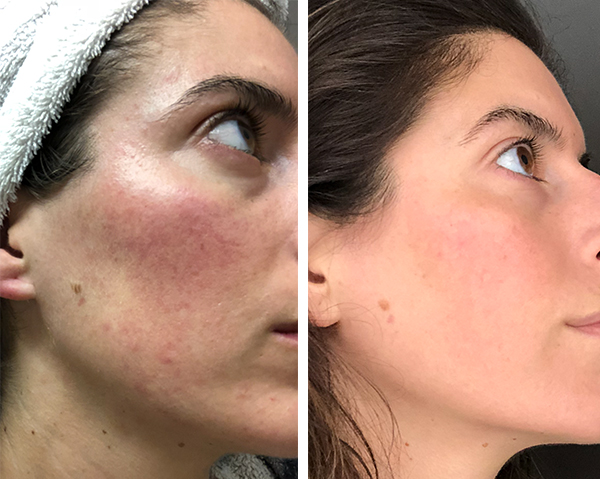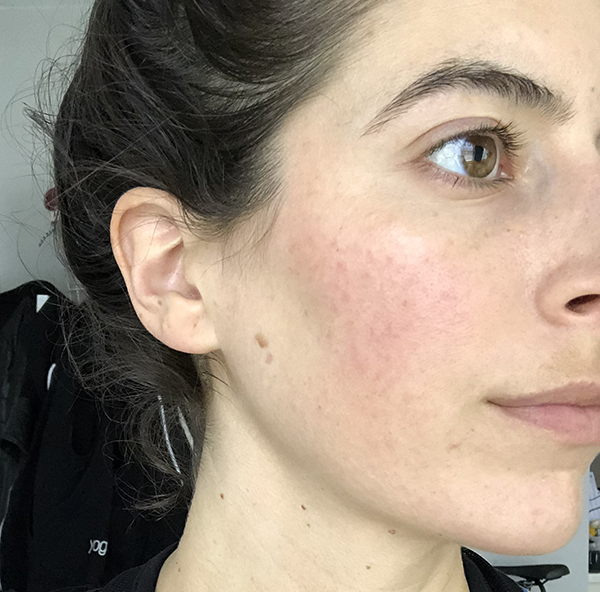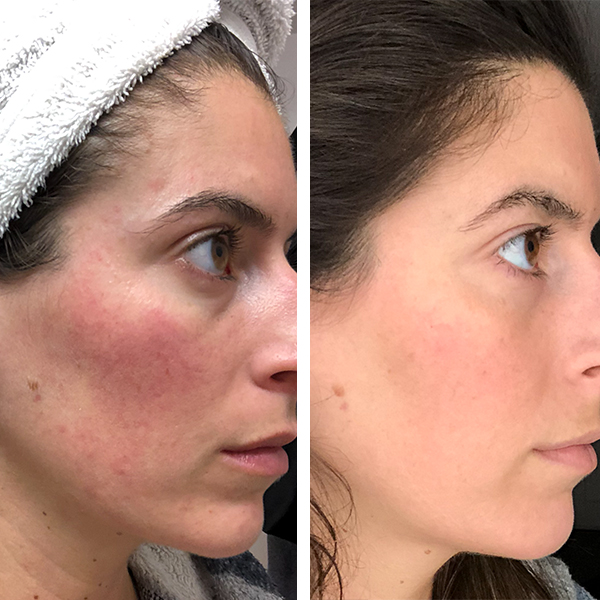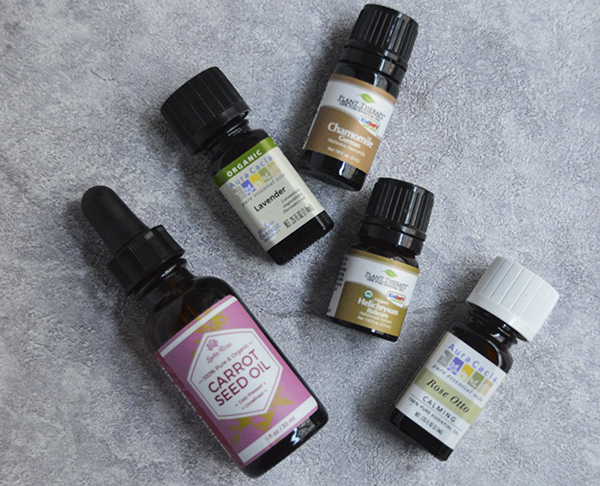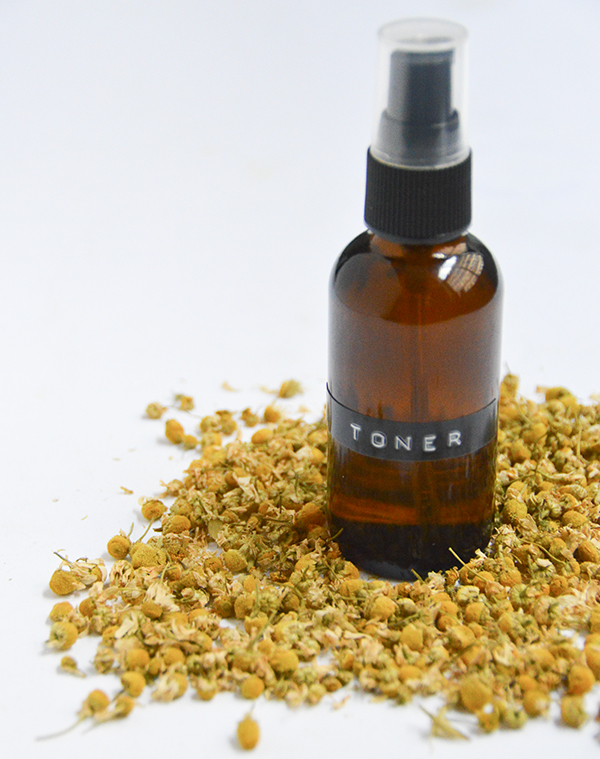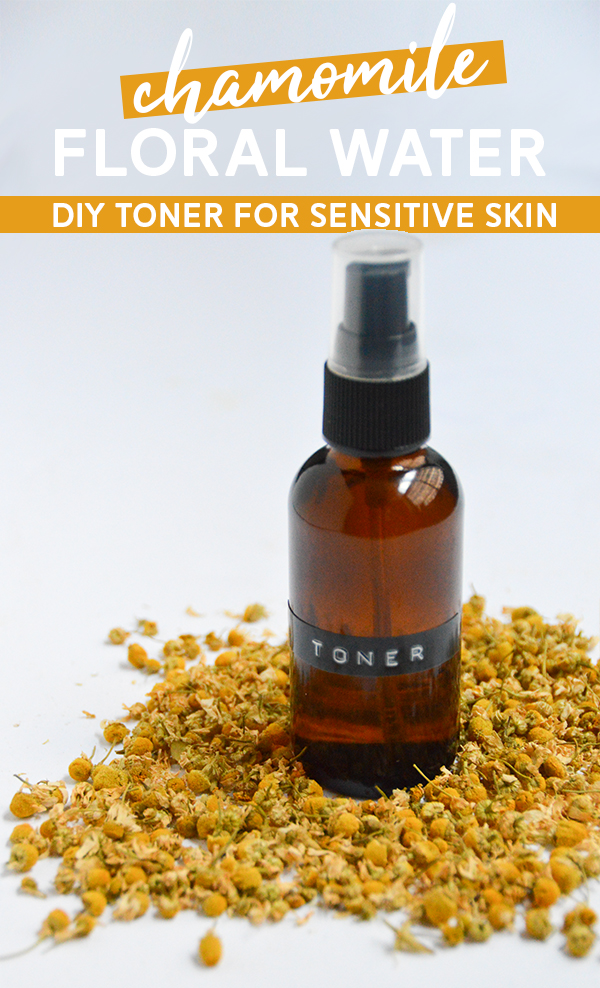
This DIY chamomile floral water toner is what I personally use for my rosacea, but it can also be great for any type of sensitive or easily-irritated skin. When I was learning about hydrosols (floral water) in my aromatherapy course, I was super into making my own at home, but to be honest I got lazy and just buy it now. So after I go through the step by step of how to make your own floral water, I’ll also share a link to the product for my fellow lazies. 😉
To learn more about rosacea and what I’ve done to get mine under control, check out this post: Essential Oils for Rosacea. And as with all posts like this, I want to remind you that I am a Certified Aromatherapist, not a doctor. I 100% stand by aromatherapy as a complementary therapy for skin issues, but the information in this post is not intended to replace advice from your dermatologist.
Why Floral Water for Sensitive Skin
Floral water (or hydrosol as it’s also called), is the water produced during steam distillation of plant material. It contains water-soluble fragrance molecules and a very small amount of essential oil. It’s great to use if you need a low concentration of essential oils or a low potency in general.
With sensitive skin, products with a simple, thoughtful ingredient list are often best. It can also be helpful to avoid products containing harsh astringents and alcohol. That’s where hydrosols come in. Gentle, alcohol-free toners can be hard to find on the shelves. But you can make your own toner at home by simply mixing some apple cider vinegar with floral water.
Best Hydrosols for Sensitive Skin
So which plant should you use for your hydrosol? If you’re like me and dealing with rosacea, I’d recommend:
If you don’t have rosacea but have other skin sensitivities, the above three are still great options. You could also use:
You want to make sure you’re using organic and pesticide-free plant material. It should be one singular botanical species only. The above affiliate links are to Frontier Co-op’s Amazon store (they sell organic bulk herbs). Mountain Rose Herbs is another great supplier I’d recommend.
DIY Chamomile Floral Water Toner: How to Make It at Home
I use German chamomile in my toner, but you could use any of the options listed above instead. You might remember that I talked about how much I dislike the smell of German chamomile, but I don’t mind it as a toner. Because I’m applying a facial oil after the toner, the scent doesn’t linger and it doesn’t bother me.
You’ll need just three ingredients for this DIY chamomile floral water toner:
- German chamomile (or herb of choice, see above list for options)
- Distilled water
- Apple cider vinegar

Instructions for DIY Chamomile Floral Water Toner
- Add 1 cup German chamomile and 2 cups distilled water to the bottom of a pot. Let soak for a couple hours.
- Place a vegetable steamer over the chamomile and water in the pot. Then place a small bowl on top of that. If you don’t have a vegetable steamer to separate the bowl from the chamomile, you can also place a stone at the bottom of the pot and prop the bowl on top of that.
- Put a lid *upside-down* to seal the pot. Make sure the lid doesn’t have steam holes in it. I suggest a lid that goes to a bigger pot than the one you’re actually using.
- Place ice on top of the upside-down lid. As the ice melts, you’ll need to replace it with fresh ice. If you keep the ice in bags and place the bags on the lid, it’ll save you from having to mop up the melted ice. If you put the ice cubes directly on the lid, have a turkey baster handy to suck up the pooling water.
- Put your DIY distiller on the stove over low-medium heat. As the chamomile water starts to evaporate, the steam will rise and hit the cold lid, turning back into a liquid. Because the lid is upside down, the drops of liquid will drip into the center and fall into your bowl. This is your hydrosol.
The process will take a couple hours. When you have your German chamomile hydrosol, let it cool, then assemble your toner in a small spray bottle. A dark-colored glass is best. Scale these numbers up or down as needed to accommodate the size of your spray bottle.
- 2 oz German chamomile hydrosol
- 2 tsp apple cider vinegar
The role of a toner is to balance the skin’s pH and provide moisture. Apply it daily after cleansing and before applying a facial oil and/or moisturizer. If you want to learn more about the facial oil I use for my rosacea, check out this post: DIY Facial Oil for Rosacea.
From the time of distillation, a hydrosol will remain fresh for eight months to two years (depends on how it’s stored, the plant, etc.). In general, if you don’t use it within six months, refrigeration is recommended to provide a longer shelf life.
Where to Buy Chamomile Floral Water
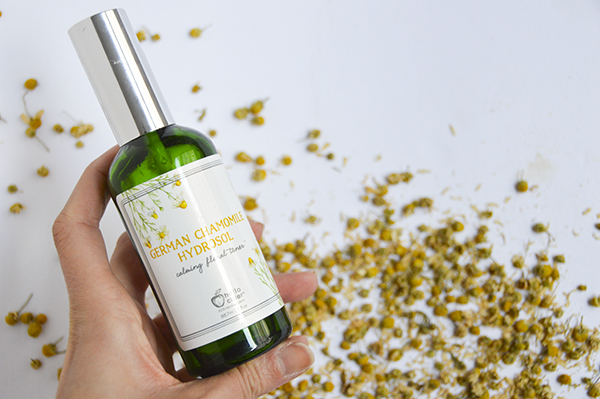
Don’t feel like making your own toner for sensitive skin at home? I hear you, I see you, I gotchu. This German Chamomile Hydrosol from Hello Cider is basically the exact same thing I just showed you how to make. It’s only ingredients: German chamomile hydrosol and apple cider vinegar. And it’s organic and available on Amazon. I’ve been using it for a few months now since my homemade batch ran out and love it—again, literally the same thing as my DIY chamomile floral water version.
xo Nicole
The statements and blends referenced in this post have not been evaluated by the Food and Drug Administration. Products and/or information are not intended to diagnose, treat, cure or prevent any disease. If you are pregnant, nursing, have a medical condition or are taking any medication, consult with your physician before using any essential oil or blend.
I’m a Certified Holistic Aromatherapist through the Institute of Integrative Aromatherapy and only share blends with you that I’ve personally used and from which I’ve benefited. I stand behind them 100%! That being said, essential oil blends are most effective when made with individual needs, goals and personality in mind.
